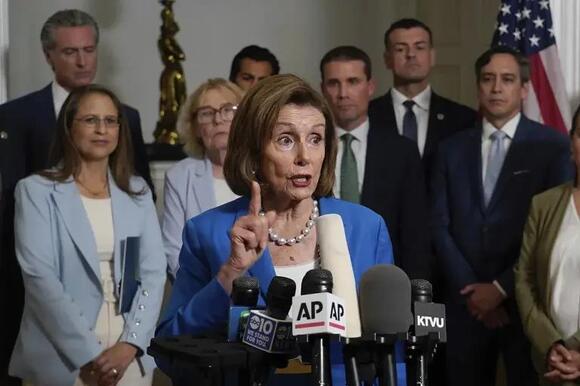Former Capitol Police Chief Stephen Sund Calls Out Nancy Pelosi Over January 6th National Guard Controversy
In the aftermath of the January 6th Capitol riot, the search for answers and accountability has taken center stage in American political discourse. But as new evidence emerges and key figures speak out, the narrative is shifting in unexpected ways. Former Capitol Police Chief Stephen Sund, once thrust into the spotlight as the events of that fateful day unfolded, is now directly challenging former Speaker of the House Nancy Pelosi, exposing what he calls a “deliberate delay” in National Guard deployment and a campaign to shift blame away from Congressional leadership.

The Confrontation: Pelosi Faces Tough Questions
It began with a tense exchange between Nancy Pelosi and journalist Allison Steinberg of Lindell TV. Steinberg pressed Pelosi with a question that has haunted the halls of Congress since January 6th: “Why did you refuse the National Guard on January 6th?” Pelosi, visibly irritated, snapped back, “Shut up. I did not refuse the National Guard. The president didn’t send it. Why are you coming here with Republican talking points as if you’re a serious journalist?”
Sund’s Account: Repeated Requests Denied
- January 3rd: Sund asks Pelosi’s Sergeant-at-Arms, Paul Irving, for additional support. Irving reportedly responds, “I don’t like the optics of all the National Guard around here.”
- January 3rd (later): Sund checks with the Senate Sergeant-at-Arms, Michael Stenger, who concurs: “We don’t want any troops here.”
- January 6th, 12:58 p.m.: Irving “runs it up the chain” to Pelosi for approval.
- 1:05 p.m.: Sund approaches Stenger again for Senate approval. Stenger defers to Irving and Pelosi.
- 1:21 p.m.:Stenger is still waiting for Irving’s approval.
- 1:28 p.m.: Irving is still waiting for Pelosi’s OK.
- 2:08 p.m.: Authorization from Pelosi and McConnell finally arrives—hours after Sund’s initial request.
Sund’s frustration is palpable: “Denied. Denied. Denied. Can I—How about now? How about now? How about now?”
Why, then, were Sund’s requests denied? According to his account, Congressional leaders were concerned about the “optics” of deploying the National Guard—a move they feared would make the Capitol look like a militarized zone. Sund alleges that this reluctance was partly motivated by political calculations: “We want the optics to be the Capitol being ransacked. So, we can blame Trump on that and then impeach him and prevent him from ever running again.”

The Aftermath: Sund Forced to Resign
Despite being denied critical resources, Sund and his officers managed to resecure the Capitol within hours of the breach. For his efforts, however, Sund says he was forced to resign, humiliated, and stripped of his benefits.
Changing the Law: Capitol Police Emergency Assistance Act
In the wake of the riot, Congress passed the Capitol Police Emergency Assistance Act of 2021, which changed the rules regarding National Guard deployment. Sund points out that, prior to this law, he lacked the authority to call in the National Guard without approval from the Capitol Police Board, which included the House and Senate Sergeants-at-Arms.
Pelosi and her allies have repeatedly claimed that President Trump refused to send the National Guard, implying that he wanted the unrest to occur. However, Sund and others dispute this narrative, noting that Mayor Muriel Bowser of Washington, D.C., also declined National Guard support in a letter sent on January 5th, citing coordination with Congressional security officials.
Sund’s revelations have reignited the debate over accountability for January 6th. He accuses Congressional leaders of “weaponizing the entire government” against Trump and his supporters, waging “political warfare” for years.

The Larger Implications: Security vs. Politics
The controversy over National Guard deployment on January 6th highlights a larger issue: the intersection of security and politics in the nation’s capital. Sund’s account suggests that political considerations took precedence over public safety, with devastating consequences.
Conclusion: The Fight for Accountability
As Stephen Sund continues to speak out, his story serves as a powerful counter-narrative to the official explanations offered by Congressional leaders. His detailed timeline, corroborated by official documents and subsequent changes to the law, paints a picture of missed opportunities and deliberate delays.
With Congressional investigations ongoing and new evidence coming to light, the battle for accountability is far from over. Whether Sund’s revelations will lead to real change remains to be seen. But one thing is certain—the truth about January 6th is more complex, and more politically charged, than many in Washington would like to admit.